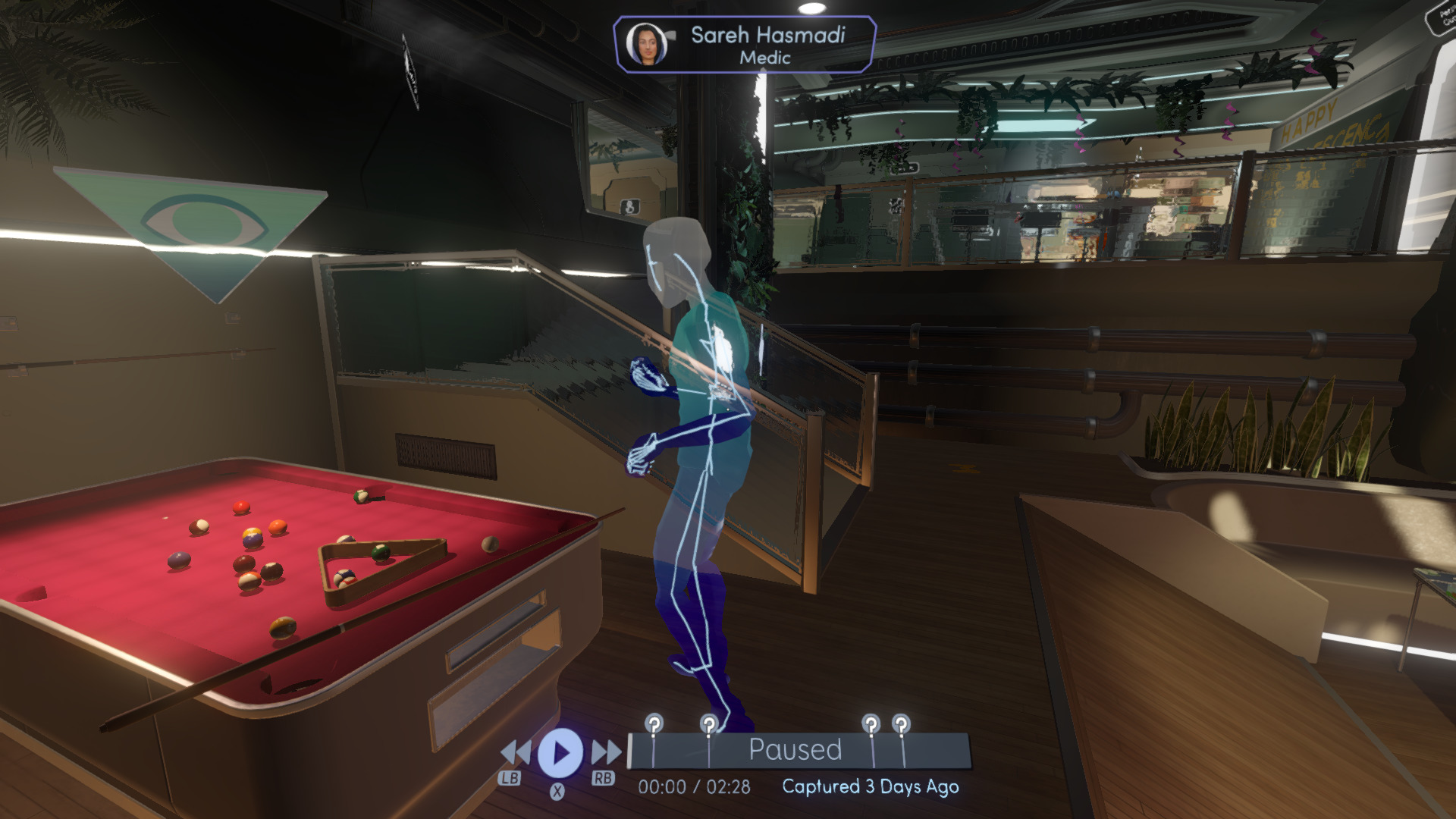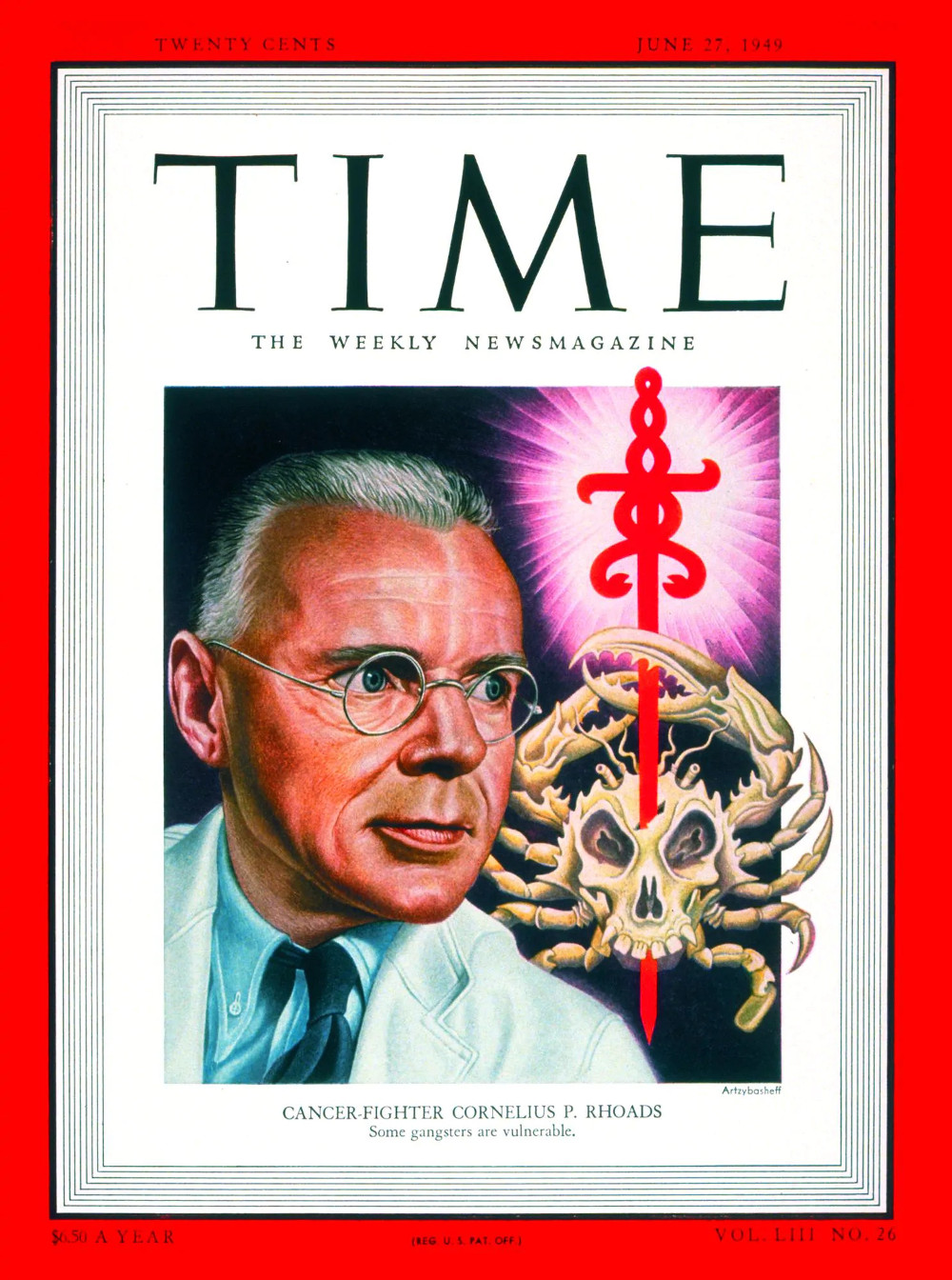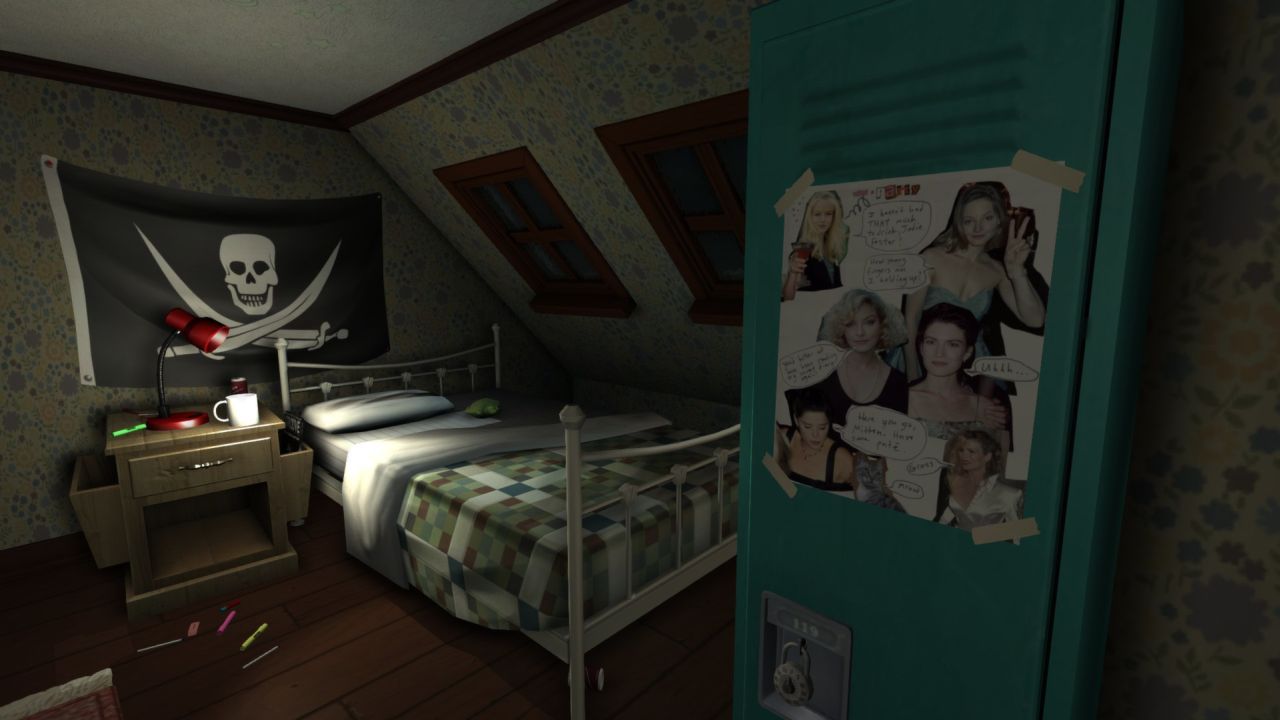Reviews by Eloquence
Dune. Arrakis. Desert planet. Long before I read Frank Herbert’s 1965 classic, it exerted its pull on me. As a kid, I spent dozens of hours playing Dune II (1992), which kickstarted the real-time strategy genre in gaming, with a thin plot loosely based on Herbert’s novel. I enjoyed Star Wars, which owes many of its ideas and settings to Dune. And I ran away (as you should) from the botched 1984 movie adaptation.
In 2020, how does the novel hold up?
Dune tells the story of a conflict in the far future, with cataclysmic consequences for a humanity that has become an interplanetary civilization. The conflict centers on the planet Arrakis, the only source of “spice”, a mind-enhancing drug needed for space navigation.
Young Paul Atreides, member of one of several powerful Houses that rule the galaxy, joins his father, Duke Leto, on a journey to take charge of Arrakis on behalf of the Emperor, displacing House Harkonnen. The Harkonnens have other plans—and so, it turns out, does the Emperor. Will the inhabitants of the desert planet, the native Fremen, take a side in the conflict? And what is the meaning of Paul’s visions of the future?
Frank Herbert is an incredibly imaginative author, and he manages to pack so many complex ideas into just a few paragraphs that it can make your head spin. The future of Dune is one where humanity has not only invented AI, it has decided to do away with it, in a jihad against technology. Instead of AI, a select few serve as mental computers—mentats—on behalf of the ruling class.
Religion, too, plays a powerful role. A religious order known as the Bene Gesserit has fused faith, eugenics, and mental discipline to pursue a long term agenda alongside secular rulers. Through its Missionaria Protectiva, it has seeded superstitious beliefs in human settlements throughout the galaxy, so it can exploit those beliefs later.
All this world-building is at times dizzying, especially when Herbert uses invented words and concepts without much introduction, leaving the reader to figure out what they mean (or inviting her to read the book’s glossary). But this is not a book without payoff—the characters and the world come alive as the story unfolds.
Herbert wrote five more novels that continued the story, and his son Brian Herbert has co-authored many additional books set in the same universe. While this sheer volume may seem daunting, the story told in Dune stands on its own, with or without sequels or prequels.
The Verdict
Dune is a masterpiece, at times challenging, but highly rewarding. By focusing on timeless themes of power and belief (instead of obsessing about the future of technology), Herbert managed to write a story that is just as much at home in the 21st century as it was in the 20th.
In some ways, it feels more relevant than ever. Part of the book is a plea for ecological literacy (it even features an appendix on the ecology of Arrakis), for understanding the interdependence of life and life-giving resources. And as we grapple with AI not just as a concept but as a reality, Dune depicts a fascinating future where the human intellect is augmented, not replaced.
I’ll withhold judgment on the arc of Herbert’s books until I’ve read more of them—but I can wholeheartedly recommend the first book in the series. A new movie adaptation is in the works, but with a world-wide pandemic, who knows when we’ll actually see it. In the meantime, you can’t go wrong reading the book that started it all.
As my reviews of Gone Home and Firewatch make clear, I am favorably disposed towards exploration games (sometimes described as “walking simulators) where the player explores a story-rich world with relatively few action or puzzle elements.
Tacoma is the second game by the makers of Gone Home, Fullbright Games from Portland, Oregon. In Gone Home, the main character (a woman named Katie) returned to an empty home and tried to find out why her family wan’t there to meet her. In Tacoma, the main character (a woman named Amy) visits an empty space station and tries to find out what happened to its crew.
But where the world of Gone Home was littered with notes and other papers for the player to sort through, Tacoma tells its story through the experiences of the crew, which Amy can review through recovered Augmented Reality recordings. The ghostly figures of the crew can be observed in conversation, taking a smoke break, or playing AR games.

In the lounge of the space station, watching an AR recording of the station’s medical officer talking to its AI. (Credit: Fullbright Games. Fair use.)
Ostensibly, Amy’s job is to recover the valuable “wetware” that powers the ship’s Artificial Intelligence, but in the process, we are learning more and more about the events that caused Tacoma to drift through space without its crew. It quickly becomes clear that an accident happened on Tacoma, but we still don’t know the fate of the crew, and whether there is a deeper mystery to uncover.
In addition to AR recordings, Amy can access some of the crew members’ most intimate personal files—calls and instant messages, emails, private notes. Much of this does not add to the main story, but paints a more complete picture of each crew member’s motivations and emotional connections.
There are no real puzzles, but there are countless objects you can interact with, from books you can pick up to a zero-g basketball game you can play. These details serve no purpose other than to create a richer world for the player to explore.
There’s also a fair bit of world-building to center the story of Tacoma in a future where humans and AI must learn to co-exist, and a small number of corporations is fighting for control of people’s lives. This world is intelligently constructed, and whether or not you find it plausible, it’s internally consistent.
In spite of all this, you’ll likely finish the game in 2-3 hours—double that if you add another playthrough for more exploration or to access the commentary track.
In short, Tacoma is an atmospheric game that lets you feel like you’re on a space station, without having to deal with demons or aliens. As a story, I found it less compelling than Gone Home, in spite of the clever storytelling mechanics. It’s hard to become invested in any of the characters, and the clues we get about their backstories provide very little narrative payoff.
Nevertheless, I enjoyed the time I spent on Tacoma. I wouldn’t recommend paying full price for it, but it regularly drops to $5-$7.50, at which it offers good value.
Is rudimentary consciousness a fundamental property of matter? The idea strikes many people as bizarre, because it evokes notions of self-aware household objects and tomatoes screaming in pain as they make their way into the pasta sauce. But it deserves more precise articulation and a fair hearing.
In “Galileo’s Error”, philosopher Philip Goff makes the case for this idea, known as panpsychism, for a general audience. He begins by outlining the problems with dualist mind/matter explanations (where the mind is a separate “thing” that somehow interacts with matter), and with strictly materialist explanations that neglect to offer any explanation for the quality of conscious experience.
What if those qualities are the intrinsic nature of matter itself? In this view, the human mind is continuous with the universe in which it is embedded. There’s no need to postulate “special mind stuff”, to invent deities, or to wave your hands and say “emergent property”.
Instead, in this view, subatomic particles like electrons experience change, and more complex forms of consciousness can be built up (or indeed arise) from simple ones. The qualities of human experience—the color red, the smell of coffee, a loving touch—must have their foundations in matter itself.
Of course, this is not a new idea, and many philosophies and religions have embraced forms of panpsychism. It is not even new to Western philosophy, and Goff especially cites the debates between Bertrand Russell and Arthur Eddington. This context is where the book offers what I consider to be the most succinct argument in favor of the panpsychist hypothesis (p. 134):
Eddington’s starting point is as follows:
Physical science tells us absolutely nothing about the intrinsic nature of matter.
The only thing we know about the instrinsic nature of matter is that some of it, i.e., the matter inside brains, has an intrinsic nature made up of forms of consciousness.
It is hard to really absorb these two facts, as they are diametrically opposed to the way our culture thinks about science. But if we manage to do so, it becomes apparent that the simplest hypothesis concerning the intrinsic nature of matter outside of brains is that it is continuous with the intrinsic nature of matter inside of brains, in the sense that both inside and outside of brains matter has an intrinsic nature made up of forms of consciousness.

Aurora Borealis, seen from Iceland in February 2014. The complexity of the nonliving world invites the question whether it is fully discontinuous with embodied human experiences. (Credit: Schnuffel2002. License: CC-BY-SA.)
Yet, current scientific attempts to explain consciousness rarely consider it a phenomenon that is even worth studying outside of the context of a brain. And these “explanations” (e.g., efforts to show that certain neural activity is correlated with certain conscious experiences) are at best predictions—they don’t get us much closer to understanding what conscious experience is.
Goff points the finger at Galileo Galilei for setting science on a path that is strictly quantitative, a path where any effort to explain the quality of an experience (the color red, the smell of coffee, a loving touch) is out of bounds, or at least suspect. Goff argues that to disregard these qualities is to disregard fundamental scientific facts. Indeed, no fact is as foundational and undeniable as the reality of our own conscious minds.
Panpsychism is an attractive hypothesis. Like the many-worlds interpretation of quantum mechanics, it elegantly resolves tricky questions at the very “bottom” of existence. It also has similar difficulties of testability, which could put it in the “not even wrong” realm of speculation. Perhaps, as our ability to predict conscious states increases thanks to efforts like integrated information theory, we will predict them in places where we wouldn’t expect them. Then the more difficult claim to defend may be that “mere matter” is not continuous with conscious experience.
The Verdict
Philip Goff presents a cogent and beautiful argument in defense of a thesis many “materialists” will seek to dismiss as New Age woo. But the idea that consciousness needs no rudimentary precursor in nonliving matter may itself turn out to be woo. Goff does not assert that the panpsychist hypothesis is correct—only that it should be considered seriously in our efforts to understand consciousness.
The book is strongest when it presents this core argument. Goff lost me in the last chapter, where he makes what I consider to be a very weak argument for a non-deterministic universe and the existence of free will. He argues that “free will” is the “responsiveness to rational considerations”, but it’s not clear why a deterministic brain cannot be “responsive to rational considerations”, and why determinism must be a constraint to be “freed” from. Perhaps that is a matter for another book; in any event, it seems out of place in this one.
I recommend Galileo’s Error not as any definitive answer to questions about the nature of consciousness, but as a very well-reasoned argument for expanding the Overton window of science, especially when it comes to explaining the very qualities that make life worth living.
Can a game be a place?
As the player of Firewatch, you are a man named Henry who starts a job as a lookout in Shoshone National Forest, in Wyoming. In the preamble, we learn that this is an escape from dealing with your wife’s early-onset dementia.
Your only regular human contact is by radio, with a woman named Delilah who works in another lookout tower. Delilah is your boss, and she soon gives you your first assignment: to investigate some illegal fireworks near a lake.
Your relationship with Delilah is influenced by the dialogue choices you make. Mostly, the game keeps you on rails to uncover a larger mystery. This involves a lot of walking around through beautiful landscapes, using your map and compass to find your way.
This is an exploration game—or, as some would say, a walking simulator. The biggest challenges for the player tend to be of the “how do I get from A to B” variety. Nonetheless, Firewatch manages to be immersive and at times even menacing. The game targets an adult audience—as the developers put it, it is a “video game about adults having adult conversations about adult things.”

Firewatch offers many scenic views of its version of Shoshone National Forest. (Credit: Firewatch by Campo Santo. Fair use.)
After you finish the story, you can still continue to explore Shoshone National Forest at your leisure (and collect the game’s soundtrack in a mini-game). The landscapes really are beautiful, whether you’re walking through Thunder Canyon towards the lake, admiring a sunset, or exploring the forest at night with your flashlight on.
It is a very short game, and like life itself, its story is ultimately a bit untidy. You’re unlikely to get more than 4-6 hours of play time out of it. But it is a game that is also a place, and years after playing it, you may be tempted to visit it again.
The current regular sales price for Firewatch is $20. It has repeatedly been on sale for $5, so I recommend wishlisting it and buying it at a lower price.
James Gleick is widely regarded as a masterful science writer, and for good reason. Through the 526 pages of The Information (2011), Gleick spins an accessible tale about Charles Babbages’s difference engine, about Turing machines and Maxwell’s demon, about Gödel’s incompleteness theorems and Shannon-Fano coding and Boolean algebra, all in service of illuminating a concept that may seem ineffable: information itself.
Gleick shows how complex computation and signal processing problems led to the development of information theory, which gave us ways to quantify information and to speak about the entropy of a body of text. This in turn touched countless other disciplines, and made the networked world we find ourselves in today possible. Towards the end of the book, Gleick explores the wonders of this world, including Wikipedia.
The book was written before recent debates about fake news, Twitter bot armies, and similar disinformation campaigns, but Gleick anticipated that the burdens of selecting true from false, and forgetting that which should be forgotten, would only increase.
This is a book that aims for breadth (from talking drums to telegrams, from analog computers to digital ones), not depth. If you’re looking for an introduction to information theory, look elsewhere. As a history of ideas, The Information succeeds brilliantly. Page after page, the book places a question in the reader’s mind, then addresses it; it weaves together anecdotes and facts, never overloading the reader with jargon, but not shying away from complexity.
As Gleick points out, without selecting that which matters, we end up with a Library of Babel, conceived by Argentine author Jorge Luis Borges as a library that contains all possible books of a certain length. In the libraries of the real world, this book has earned its place to give us a shared history and vocabulary for the conversations to come.
In How to Hide an Empire, historian Daniel Immerwahr argues that we know far too little about the history of United States beyond the contiguous states that make up the “logo map”:

As in the example above, representations of the United States often exclude Hawai’i and Alaska, to say nothing of “territories” like Puerto Rico, American Samoa, Guam, the US Virgin Islands, or the Northern Marianas. But the stories of the millions of people who live there deserve to be heard, and Immerwahr does his best to tell them.
To set the stage, Immerwahr describes the expansion of the United States from coast to coast, and the broken promises and systematic removal of native tribes that came with it. Whether tribes sought to assimilate or to fight, their land was taken; projects like the creation of the State of Sequoyah failed. Instead, US states borrowed the names of native tribes whose land was stolen to create them.
The story continues with America’s quest for bird poop—the annexation of island territory to harvest accumulated guano—and culminates in a America’s colonialism binge at the dawn of the 20th century. In the Spanish-American War, America notably “acquired” the Philippines, Guam, and Puerto Rico. The Philippine-American War that followed—a war in which Filipinos fought for liberation from American colonial rule—caused a civilian death toll in the hundreds of thousands.
The Cancer Man
But the Philippines are not the only country that resisted American colonialism. From the beginning, many Puerto Ricans have favored independence, especially in light of the overt racism they encountered in contact with visitors from the US mainland.
Immerwahr tells the story of Cornelius Rhoads, a US mainland pathologist who visited Puerto Rico as part of an international health effort. Rhoads not only harbored deep racial hatred for the Puerto Ricans, he bragged about murdering them:
They are even lower than Italians. What the island needs is not public health work but a tidal wave or something to totally exterminate the population. It might then be livable. I have done my best to further the process of extermination by killing off 8 and transplanting cancer into several more.
No evidence of these crimes was ever found (which does not mean that they did not take place), and Rhoads called the letter a joke. He faced no significant consequences for it, and became a celebrated cancer researcher (and an expert in chemical and biological weapons, charged with approving tests on human subjects during the war).

Time Magazine cover featuring Cornelius Rhoads, June 27, 1949. (Credit: Time Magazine. Fair use.)
The Rhoads letter was a major scandal in Puerto Rico that drove many to join its burgeoning independence movement. One of them was Oscar Collazo, who joined with another Puerto Rican nationalist in an attempt to assassinate US President Harry Truman in 1950.
Due to the historical amnesia that characterizes America’s relationship with its “territories”, it was only in 2002 that Rhoads’ name was removed from a prestigious award due to the letter in which he bragged about murdering Puerto Ricans. “And that’s how you hide an empire”, Immerwahr observes.
The Empire of Points
The later part of the book mainly deals with the question why America did not become an empire in the British mold after World War II. Instead, the US relinquished control over one colony (the Philippines, through the Treaty of Manila) and sought to establish no new colonies elsewhere. Military bases around the world—a “pointillist empire”—replaced the conventional model of control over vast swaths of territory.
Immerwahr sees multiple reasons for this change, most notably:
-
the growing rise of independence movements around the world, which made colonies an increasingly costly proposition;
-
America’s leadership in synthetics, logistics, and standardization—achieved in significant part through wartime efforts—which enabled it to project military and economic power throughout the world, without being dependent on territorial control;
-
wartime weariness of US troops, who wanted to go home, not occupy a country like the Philippines they had fought side-by-side with the Filipinos to defend.
Immerwahr concludes by examining the political and cultural impact of US military bases, and the connection between this new form of imperial power and the threat of terrorism organized from many small, well-hidden locations.
The Verdict
Immerwahr is a very talented writer, and How to Hide an Empire is full of facts about the “Greater United States” most readers are unlikely to be familiar with. While this isn’t a funny book, Immerwahr isn’t shy to use humor and the first person intermittently throughout the book, without it seeming out of place.
All of this is a potent combination, and I found the book to be a real page-turner. My only criticism is that the author, in emphasizing the role of territory (from colonies to military bases), ends up spending very little time discussing the many other ways the US has projected imperial power, from overthrowing governments to meddling in elections.
While I don’t believe for a moment that this was the author’s intent, readers unfamiliar with this larger history might come away with the impression that the territorial story is the whole story. A larger analytical frame would have served the book well, but as it is, it remains a very readable and insightful analysis of America’s relations with the people who live in the United States beyond the logo map.
The short stories in this 450 page collection by Ken Liu (The Grace of Kings) span historical fiction, fantasy, and science fiction. They include:
-
the story of a woman living in a world in which souls are real, and represented by physical objects we carry around with us (the protagonist’s inconveniently manifests as an ice cube);
-
the story of an American girl in 1960s Taiwan who befriends a Chinese practitioner of the divination practice known as literomancy, and whose friendship gets caught up in the Cold War;
-
the story of a couple of who invent a method of witnessing (but not altering) historical events as they occurred, and who use it to produce modern eyewitness accounts of crimes against humanity committed by the notorious Unit 731 in China during the Second Sino-Japanese War (1937-1945).
Themes that run through many of the stories featured here include the pursuit of personal and historical truth; the balance of self-interest and societal interest; the transmission of culture and tradition through migration and trade.
Liu, who was born in China but whose parents moved the family to the United States when he was 11 years old, has done much to make Chinese speculative fiction available to Western audiences. Most notably, he translated the best-selling The Three-Body Problem into English, and has curated two anthologies of Chinese sci-fi (Invisible Planets and Broken Stars).
Many of his short stories incorporate elements of Chinese history and folklore. This makes them great jumping off points for further exploration. For example, one story about a group of Chinese gold miners coming to a town in 19th century Idaho explores the fascinating mythology surrounding Guan Yu (a general in ancient China).
Above all, I admired Ken Liu’s willingness to confront difficult themes unflinchingly. Many of the stories featured here pack quite an emotional punch, and often expose us to humanity at its worst and and its best in the same story.
While I would rate some individual stories in this volume as low as 3 stars, the best ones (including the title-giving The Paper Menagerie) are so exceptionally good that I would recommend the collection as a whole highly to any fan of speculative fiction.
As usual, I’m late to the party. Gone Home caused quite a stir when it came out in 2013. Many critics and players loved it; some angry gamers hated it, some of that hatred helped fuel the misogyny horror show known as Gamergate. Today, Gone Home is available for Windows, Linux, Mac, Switch, PS4, Xbox One, iOS, and your toaster. It remains a polarizing game, and it’s not hard to see why. You can finish the game in 2-3 hours; it features no conventional “puzzles” or action, and one of its central themes is a lesbian coming-out story.
Gone Home is a first-person exploratory game. It’s the mid-90s, you’re 21-year-old Katie Greenbriar, home from your big European adventure, only to find that your parents and sister are not there. What happened? While a storm rages outside, you walk from room to room of the “psycho house” your family moved into, trying to find clues to their disappearance. The home is littered with paper—handwritten notes, letters, photographs, receipts, books, post-its, and so on. Some notes lead to audio logs that add to the evolving story.

To find out what happened to your sister, you may have to figure out a way into her personal locker. (Credit: Fullbright. Fair use.)
Unlike a point-and-click adventure, where almost every item you encounter has some role to play, here you can interact with countless objects—pens, glasses, knick knacks, etc.—but most of them have no relevance to the plot. You have to sort through the messy home, and the house has a few secrets of its own.
There’s remarkable attention to detail, especially in the riot grrrl aesthetic of your sister’s belongings. In addition to zines and posters, you can even pick up and play cassettes with music featuring bands like Bratmobile and Heavens to Betsy.
Gaming is now a bigger tent than it ever was, and just as writing has room for short stories, gaming has room for experiences like this, where your own interpretation of a story takes precedence over puzzles or action.
My biggest criticism is that the sheer abundance of paper clues made the game a bit less atmospheric, more like an artificial world that an author has littered with stuff I’m supposed to find. Someone needs to teach the Greenbriars about recycling.
The game makes up for flaws like this with a layered story that is moving and well-told. If you’re not looking for a 20 hour diversion or a 200 hour addiction, and if exploring a story on your own terms sounds appealing, then I recommend giving Gone Home a spin. I wouldn’t have bought it at the regular price of $15, but at a discounted $6 price on GOG, it was well worth the money.
Ted Chiang’s stories are meticulously crafted thought experiments. Many of them are science fiction; “Story of Your Life“, first published in 1998, became the basis of the 2016 blockbuster movie Arrival. Others defy classification. The 2001 story “Hell Is the Absence of God” imagines a world in which God, angels, heaven and hell are real—and angelic visitations are more like natural disasters, leaving death and destruction in their wake.
Exhalation is the second collection of Chiang stories. It contains nine stories, two of which have never been published before. My favorite one is “Anxiety is the Dizziness of Freedom” (the title references an observation by existentialist philosopher Søren Kierkegaard).
The premise is that the many-worlds interpretation of quantum mechanics is correct. Through laptop-like consumer devices, anyone can create branch universes and communicate with their duplicates—their “paraselves”—in those universes, for a limited time.
The devices are called Prisms, which stands for “Plaga interworld signaling mechanism”. Why “Plaga”? That’s never explained, but some googling reveals a 1995 pre-print by Rainer Plaga titled “Proposal for an experimental test of the many-worlds interpretation of quantum mechanics”; the mechanism described in Chiang’s story matches the description in Plaga’s paper. This gives you an idea of the attention to detail in Chiang’s work.
From this premise, Chiang explores how the knowledge of an infinite number of universes—and the ability to speak with the inhabitants of some of them—would impact crime, grief, love, and loss. Through his characters’ experiences, Chiang makes us imagine that we might live in just such a world one day, while conveying a powerful moral lesson for the one we do live in today.
Other ideas Chiang explores in Exhalation include:
-
What would a world look like in which, instead of discovering ever more irrefutable evidence for the evolution of life on an Earth that’s billions of years old, scientists had discovered irrefutable evidence of a single creation event thousands of years ago? What would the relationship between science and religion be in such a world, and what would shake its faith?
-
What if we could keep life-long recordings of everything we see, hear and say, and search those recordings through the power of thought alone? How would this technologically mediated perfect memory impact our behavior, our relationships, our sense of self?
-
What if raising a healthy, capable artificial intelligence was just as time-consuming and difficult as raising a healthy, capable human child? How would such AI children be treated in a world that regards them as “software objects”?
I found “The Great Silence” (originally written to accompany an art exhibit) and “What’s Expected of Us” (inspired by the neuroscience of free will) to be the least captivating, but both are quite brief, and they are still fine stories. The best stories in Exhalation are so good that the entire volume deserves five stars. It’s been 17 years since Chiang’s first collection, Stories of Your Life and Others, was published, but it was worth the wait.
In Nutshell, Ian McEwan constructed a murder mystery told from the perspective of an unborn protagonist. The narrator of Machines Like Me, McEwan’s latest novel, is not a fetus, but he still somehow comes across as a less developed human being.
Charlie Friend is an aimless drifter who, after many failed schemes, makes just enough to get by through stock market trades. After stumbling upon an inheritance, Friend decides to purchase one of the first androids with human-like intelligence. Of course, this machine being is called Adam.
The book is set in an alternative version of the 1980s in which the technological visions of tomorrow are the reality of yesterday. There’s no subtlety when Friend explains: “The present is the frailest of improbable constructs. It could have been different. Any part of it, or all of it, could be otherwise.“
The compounding differences between this timeline and ours create a path of breadcrumbs through the narrative: America never dropped the nuclear bombs; Alan Turning never committed suicide; JFK was never assassinated, and so on.
The main story revolves around the relationship between Charlie, Adam, and their (mutual) love interest, Charlie’s neighbor Miranda. What could have been a simple love triangle gets a lot more complicated as a secret from Miranda’s past is gradually revealed, and the ethics of both human and AI are put to the test.
Reactions to the book have been mixed. Negative reviews describe McEwan’s alternative history as a gimmick to bring Alan Turing into the narrative. My own impression is that in his later works (inculding Nutshell and The Children Act), McEwan is feeling an increasingly urgent need to voice his political views, and that every part of Machines Like Me serves this larger political purpose
In Nutshell, I found the politics jarring, with the author’s own voice coming through too clearly in the unborn narrator’s observations. In Machines Like Me, the story itself is the instrument of political expression.
In McEwan’s alternative timeline, Britain experiences Brexit-like political polarization and confusion in the 1980s, triggered by an alternative outcome to the Falklands War, and by the unavoidable job losses that come with AI-driven automation. The tribulations of the human protagonists mirror this setting of humanity’s tribalism laid bare. When its political argument turns toward futility, Machines Like Me becomes a lament for humanity.
The Verdict
McEwan is a master storyteller, but while sci-fi is certainly new territory for him, many other talented writers have visited these lands before. In an interview with The Guardian, McEwan gave a save a somewhat disdainful description of sci-fi (“traveling at 10 times the speed of light in anti-gravity boots”), and promised a more nuanced take on the “human dilemmas” that sentient AI would bring with it.
In truth, Machines Like Me is not a groundbreaking book by any stretch. It’s an aging liberal’s personal reflection on the future of the world around him, cast into a re-imagined past. I also found it to be an engaging story, not as powerful as the author’s masterpiece (Atonement), but certainly entertaining and thought-provoking.
